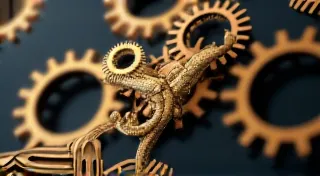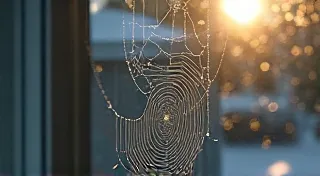Ink Stains and Echoes: Sheet Music as a Palimpsest of Time
There's a particular scent that clings to old sheet music – a subtle blend of aged paper, dried ink, and the faintest whisper of bygone eras. It's a scent that evokes a profound sense of connection, a tangible link to musicians and audiences long gone. My own fascination began with my grandfather's attic, a treasure trove of forgotten things. Amongst the dusty relics, I found a stack of yellowed sheet music, brittle and fragile, but radiating an undeniable allure. It wasn't just paper and notes; it was a whisper of history.
The concept of a palimpsest, that fascinating term from ancient writing, perfectly describes vintage sheet music. It’s a manuscript where older writings have been scraped off and overwritten, yet traces of the original remain visible. Similarly, each piece of vintage sheet music is a palimpsest of time, layered with cultural shifts, performance practices, and societal values that resonate across generations. A single sheet can tell a story far grander than the melody it holds.
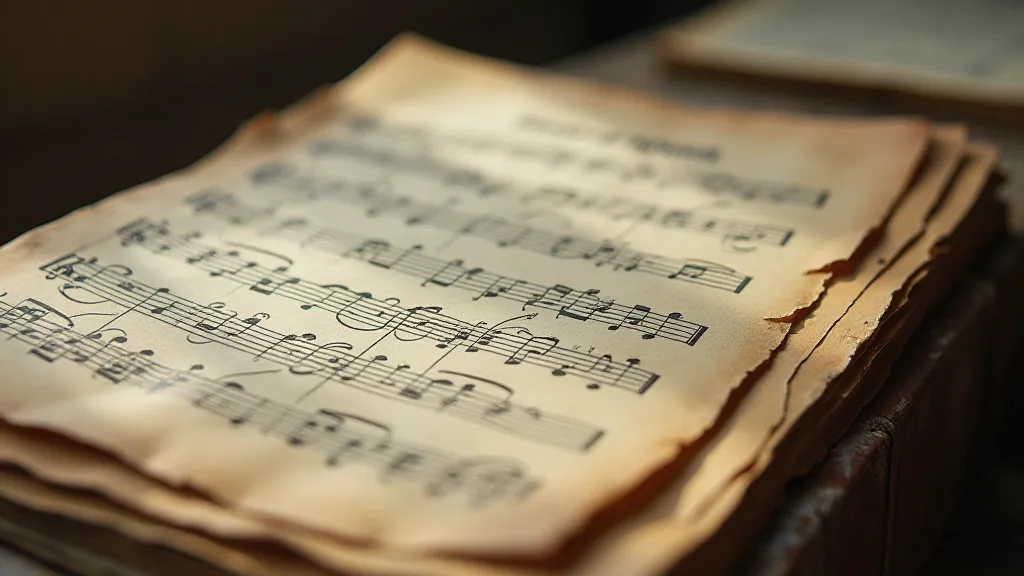
The Silent Voices of Performance
Consider the embellishments often found on early 20th-century sheet music. These weren't mere suggestions; they were *expectations*. Performers were actively encouraged – practically *required* – to improvise, to add their own flair, to truly make the music their own. A simple waltz might be adorned with grace notes, trills, and elaborate cadenzas, reflecting a culture that valued virtuosity and expressive interpretation. Today, we often strive for precise replication of a composer's intent, but those early performers lived within a world of boundless creativity and spontaneous musical invention. Examining the handwritten notations—the little adjustments, the tempo markings added years after the original publication—provides a glimpse into the performance practices of the time. A musician’s personal touch, once a vital part of the musical experience, now exists as faint echoes on the page. Understanding these performance nuances and the significance of embellishments can be further explored in The Silent Symphony of Ornamentation: Deciphering Performance Nuances in Vintage Scores.
I recall finding a copy of “Alexander’s Ragtime Band” marked up with a series of rapid tempo increases and intricate rhythmic variations. There was a sense of daring, of pushing the boundaries, that simply doesn't exist in many contemporary performances. It felt like holding a snapshot of a vibrant musical conversation. Often, these markings reveal more than just a change in tempo; they demonstrate a performer’s willingness to engage with the piece on a deeply personal level, leaving their mark on the composition. It’s a testament to the understanding that music isn’t just about notes on a page, but about a living, breathing interaction between performer and audience.
A Reflection of Societal Values
Beyond performance practices, vintage sheet music acts as a powerful mirror reflecting the societal values of its era. The cover art, in particular, is a fascinating study in cultural trends. Early 20th-century covers, often depicting glamorous flappers or dashing soldiers, speak volumes about the aspirations and anxieties of the time. The rise of ragtime, for instance, wasn’t just a musical phenomenon; it was a cultural rebellion against Victorian formality, a joyous expression of a rapidly changing world. The language used within the lyrics, too, reflects the changing social norms and evolving sensitivities of the time, offering insights into the values that shaped society.
And then there are the less obvious clues. The choice of composer, the dedication inscribed on the cover, even the typeset font – all contribute to a complex tapestry of cultural context. Songs celebrating patriotism during wartime, sentimental ballads expressing familial love, and spirited dances encouraging social interaction – each piece offers a window into the lives of those who lived through it. It’s akin to uncovering fragments of a lost civilization, piecing together a narrative through the seemingly insignificant details of everyday life. Understanding the nuances of this context requires a deeper appreciation for the historical backdrop, and further examination of the lyrics themselves can reveal compelling social commentary. Those interested in understanding the geographical influences on sheet music styles should explore exploring the broader geographical influences.
The Craftsmanship of a Forgotten Art
It’s easy to take printed music for granted in the age of digital downloads. But holding a piece of vintage sheet music is a visceral reminder of the artistry and labor involved in its creation. The lithographic printing processes, the intricate engraving, the careful typesetting – all these were skills honed over years of dedication. The quality of the paper itself, often a thick, textured stock designed to withstand repeated use, speaks to a commitment to durability and beauty. It’s a far cry from the flimsy, mass-produced materials of today. The painstaking process of creating these pieces reflects a level of dedication and respect for the music that is rarely seen in modern production. The physical feel of the paper, the sharpness of the printing – all these details contribute to a sense of quality and craftsmanship that is deeply satisfying.
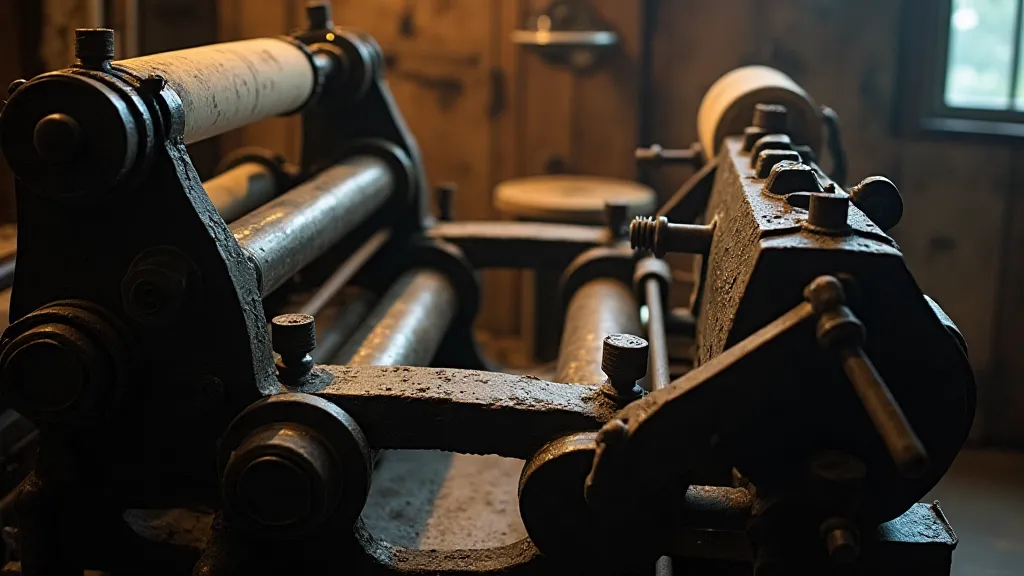
My grandfather, a former typesetter himself, would often point out the subtle imperfections – the slight misalignments, the variations in ink density – that bore testament to the human hand behind the printed page. These weren't errors; they were signatures of an era, reminders that even the most seemingly standardized products were imbued with individual artistry. The variations in the paper’s texture, the slight imperfections in the printing – these aren’t flaws, but rather evidence of the human touch involved in bringing the music to life. These subtleties tell a story about the limitations and capabilities of the technology of the time, and offer a unique perspective on the production process.
Collecting and Preservation
Collecting vintage sheet music isn’t just about acquiring beautiful objects; it's about preserving a tangible piece of history. While pristine, mint-condition copies are rare and valuable, even well-worn and annotated sheets hold immense historical significance. Proper storage is crucial. Acid-free sleeves and flat storage protect against further deterioration. Avoid direct sunlight and extreme temperatures. The fragility of these historical artifacts demands careful handling and meticulous preservation techniques.
Restoration, however, is a delicate matter. Overly aggressive cleaning or attempts to “perfect” the appearance can actually diminish the historical value. Often, the beauty lies in the imperfections—the foxing, the stains, the handwritten notations. These are the marks of time, the evidence of a life lived and a song enjoyed. The story etched into the paper through stains and annotations is often more valuable than the pristine appearance of a supposedly "perfect" copy. Examining those markings allows us to delve deeper into the history of the sheet music and the people who interacted with it. More details on authenticity and restoration can be found here.
The Accordion's Silent Song
There's a particular synergy between vintage sheet music and the antique accordion. Imagine the sounds that once poured forth from those bellows, accompanied by a repertoire drawn directly from these brittle pages. The accordion, with its robust mechanism and expressive potential, was a popular instrument in countless homes and dance halls. Many of those tunes, once vibrant and lively, now exist only as faded notations, waiting to be resurrected. The intimate connection between the sheet music and the instrument allows us to imagine the musical landscape of a bygone era.
I often imagine the accordion players of yesteryear – the itinerant musicians, the family entertainers, the dance hall professionals – their fingers dancing across the keys, their hearts filled with the joy of sharing their music. Holding a sheet of music that they might have played is a profound connection to their legacy, a whispered echo of a song that once filled a room. It sparks the imagination and allows us to experience the music in a visceral and meaningful way.
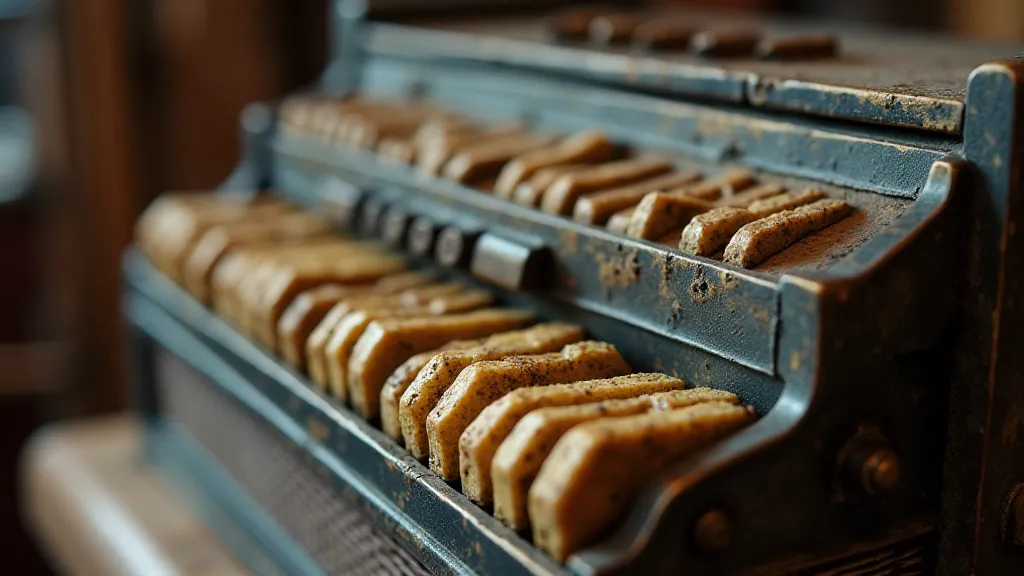
Vintage sheet music isn't just paper; it's a palimpsest of time. Each sheet holds a story waiting to be unearthed, a testament to the enduring power of music and the human spirit. And in those ink stains and faded notes, we can hear the echoes of generations past, inviting us to join in the song.

